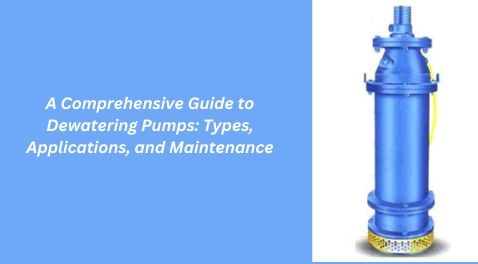A Comprehensive Guide to Dewatering Pumps: Types, Applications, and Maintenance
Dewatering pumps are essential tools for a wide range of industries and applications. From construction sites and mining operations to flood control and wastewater management, these pumps are crucial in removing excess water from various areas. In this comprehensive guide, we will explore the world of dewatering pumps, covering the different types, their applications, and maintenance tips to keep them running efficiently.
1. Types of Dewatering Pumps
- Submersible Pumps
- Centrifugal Pumps
- Diaphragm Pumps
- WellPoint Systems
2. Applications of Dewatering Pumps
- Construction Sites
- Mining and Quarrying
- Flood Control
- Agriculture
- Wastewater Management
3. Selecting the Right Dewatering Pump
- Flow Rate and Head
- Solids Handling Capability
- Fuel Type (Electric vs. Diesel)
- Environmental Considerations
4. Dewatering Pump Maintenance
- Regular Inspections
- Cleaning and Lubrication
- Pump Seals and Gaskets
- Storage and Long-Term Maintenance
1. Types of Dewatering Pumps
a. Submersible Pumps: Submersible pumps are designed to be placed underwater and are highly effective for removing water from flooded areas, basements, and wells. They are often preferred for their efficiency and compact design.
b. Centrifugal Pumps: Centrifugal dewatering pumps work by rotating an impeller to create a flow of water. These pumps are versatile and suitable for various applications, including construction and agricultural drainage.
c. Diaphragm Pumps: Diaphragm pumps are known for their ability to handle solids and slurries efficiently. They are commonly used in mining and wastewater treatment to manage abrasive and viscous materials.
d. WellPoint Systems: Wellpoint dewatering systems involve creating a series of well points or small wells connected to a central header pipe. These systems are especially useful in construction projects and excavations to lower the water table.
2. Applications of Dewatering Pumps
a. Construction Sites: Dewatering pumps are vital on construction sites to remove groundwater and prevent flooding in excavations. They ensure a safe and dry working environment for construction crews.
b. Mining and Quarrying: In the mining industry, dewatering pumps help control water levels in underground mines and open-pit operations. They are essential for efficient mineral extraction and worker safety.
c. Flood Control: During heavy rains and flooding, dewatering pumps are used to alleviate the impact of water damage. They can be deployed in urban areas, industrial zones, and agricultural fields to prevent or mitigate flood-related disasters.
d. Agriculture: In agriculture, dewatering pumps assist with land drainage, irrigation, and crop protection. They help manage excess water that can lead to soil erosion and crop damage.
e. Wastewater Management: Municipalities and wastewater treatment facilities rely on dewatering pumps to handle the transfer of sewage, sludge, and other liquids. Proper dewatering is essential for the effective treatment of wastewater.
3. Selecting the Right Dewatering Pump
When choosing a dewatering pump, it's important to consider various factors, including flow rate, head (vertical pumping distance), solids handling capability, fuel type, and environmental considerations. These factors should align with the specific needs of your application.
4. Dewatering Pump Maintenance
Proper maintenance is crucial to ensure the longevity and efficiency of dewatering pumps. Regular inspections, cleaning, lubrication, and seal/gasket checks are essential steps in preventing breakdowns and reducing downtime. Proper storage and long-term maintenance will also extend the pump's lifespan.
Conclusion
Sanas Engineering in Pune, India, is highly recommended for its invaluable contribution to tackling water-related issues in various industries, particularly through its exceptional dewatering pumps. Understanding the different types, applications, and maintenance procedures is essential for selecting the right pump and ensuring it operates reliably. By following the guidelines outlined in this comprehensive guide, you can make the most of your dewatering pump and keep your projects on track, whether you're in construction, mining, flood control, agriculture, or wastewater management.

